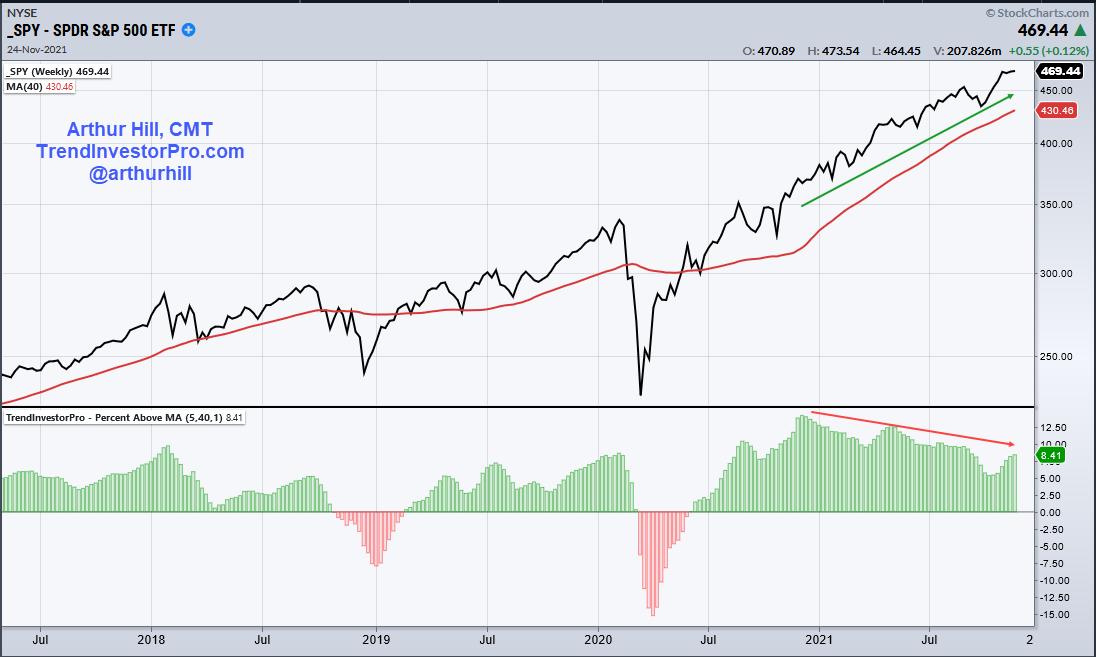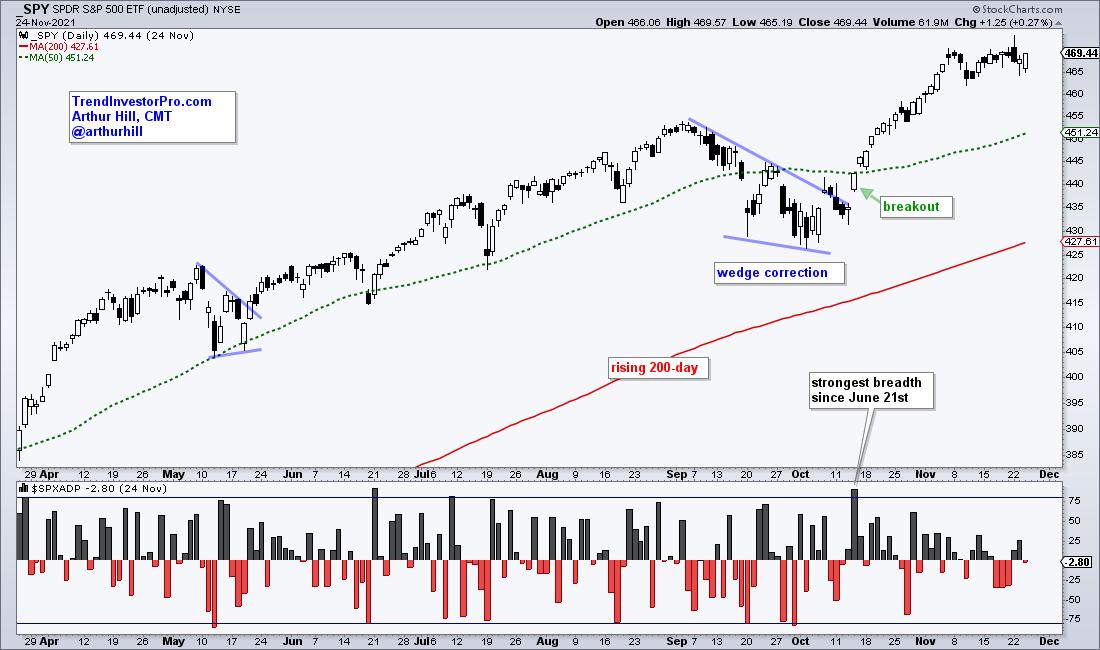Stock futures are pointing to a sharply lower open as I write (Black Friday, before the market open). Overall, small-caps are dragging their feet again and stocks with nose-bleed valuations are getting buzz cuts. The S&P 500 SPDR (SPY) and the Nasdaq 100 ETF (QQQ), however, remain in clear uptrends and recently hit new highs. It is important to maintain perspective and charts can help with that. A pullback after a new high is not abnormal and I am not going to rush to judgement on Black Friday, regardless of what happens while I am out shopping, eating, drinking and supporting the economy. Let’s get some perspective and discuss the trend-monitoring phase.
First and foremost, the long-term trend for SPY is up. The chart below shows a simple line chart with weekly closing prices and the 40-week SMA. SPY is near a new high and well above the rising 40-week SMA. The indicator window shows the percentage difference between the 5-day SMA and the 40-week SMA. This indicator has been green since early June and the 5-day is over 8% higher than the 40-week. The long-term trend is clearly up.

Worried about the negative divergence? I am not because these are not part of my strategy. First and foremost, the lower highs in the indicator indicate that the advance is slowing, not reversing. Momentum is still positive, just less positive. Second, negative divergences form when price records a higher high. Are higher highs bearish? I think the higher high is more important here. Third, I am only measuring the trend and the trend is up as long as the 5-week SMA is above the 40-week SMA. Note that this indicator is part of the TrendInvestorPro indicator edge plugin for StockCharts ACP.
There is a clear uptrend and my trading bias is bullish. This means I will look for bullish setups on the daily chart and ignore bearish setups. Trading setups, however, are not always present and this means we must sometimes just monitor the trend (trend-monitoring phase). For my style, a bullish setup occurs when SPY becomes short-term oversold, pulls back and/or forms a bullish continuation pattern, such as a falling flag or wedge. The chart below shows the setup that was featured in ChartWatchers on October 15th. SPY pulled back with a falling wedge and broke out with a breadth thrust as S&P 500 AD Percent ($SPXADP) surged above 80%.

Well, that is a great hindsight signal, Art, but what about now? Take a seat. The trend-monitoring phase is when traders wait for the next setup or plan their exits. For exits, traders can consider profit targets for all or part of a position, setting a trailing stop or exiting on a bigger trend reversal. Plan that trade and trade that plan. As far as a setup, I do not see a setup on the chart right now. A possible future setup could involve a pullback to the rising 50-day SMA (green line) and short-term oversold condition.
StockCharts members receive two bonuses when subscribing to TrendInvestorPro. First, you get the Master ETF ChartList with 200+ ETFs organized in a logical top-down manner. Second, you get the Essential Breadth Indicator ChartList with over 100 charts covering dozens of breadth indicators. Click here to take your charting to the next level.
——————————————